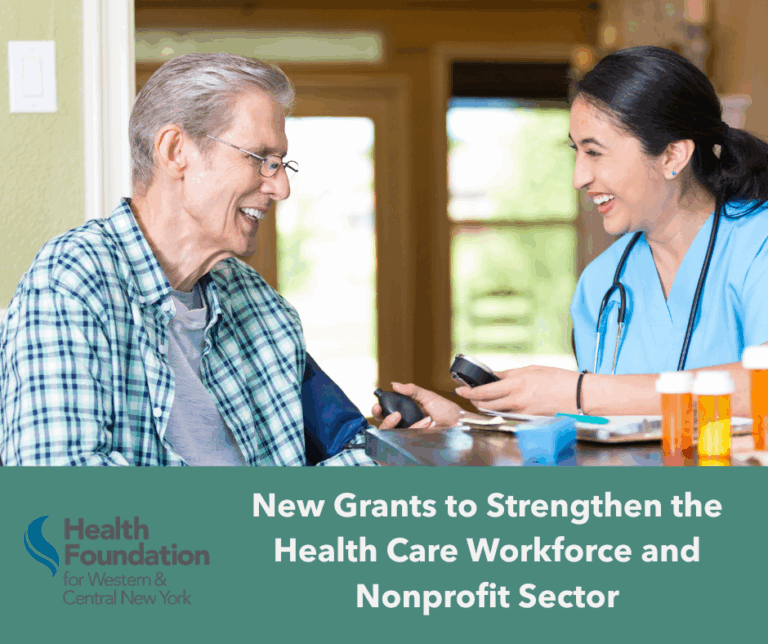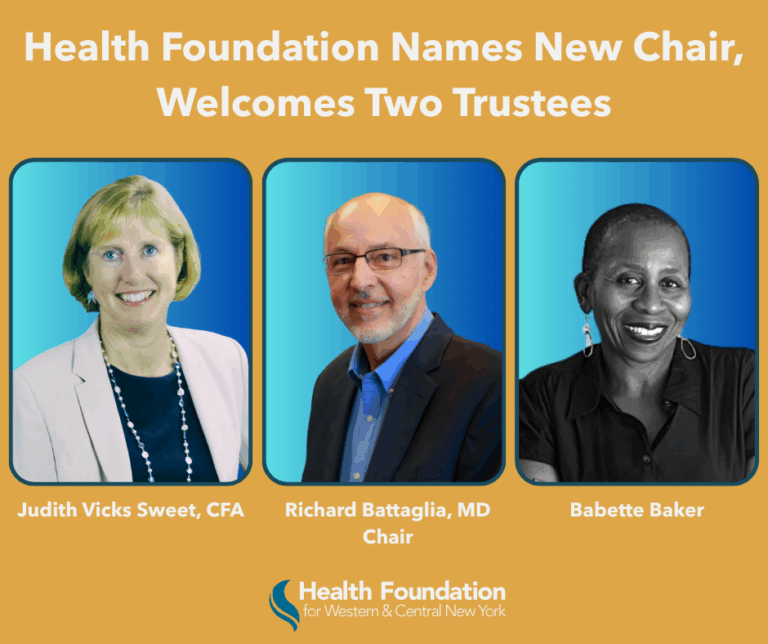In October 2020, the Health Foundation for Western and Central New York announced a new vision statement and strategic plan that will guide the work of the Health Foundation through 2025. An extensive planning process that began in 2019 has resulted in a new organizational vision statement, as well as three long-term goals and corresponding mid-term goals to pursue that vision. Our new vision is a healthy central and western New York where racial and socioeconomic equity are prioritized so all people can reach their full potential and achieve equitable health outcomes.
The Health Foundation’s mission will continue to be improving the health and health care of the people and communities of western and central New York. The plan also reaffirmed the Health Foundation’s commitment to young children impacted by poverty; older adults; and the community-based organizations that serve them.
Our new vision will be pursued through a set of long- and mid-term goals. This playbook is an overview of why we chose this specific goal, and how we plan to pursue it.
Midterm Goal 2: Children have access to high-quality social-emotional learning support.
The Health Foundation for Western and Central New York has been a leader in supporting children’s social and emotional development in our regions. The Health Foundation helped seed and nurture the growth of multiple evidence-based models for supporting child development, and has engaged partners to ensure this work continues to be sustained and spread throughout the region. Social and emotional skills are central to a child’s long-term ability to thrive as a member of the community and promote strong interpersonal relationships. Additionally, social and emotional skills can serve as a buffer for children with adverse childhood experiences; by increasing social and emotional competencies, a child builds resilience, which can mitigate the severe long-term impacts of trauma.
BACKGROUND
A child’s first five years of life are critically important—90 percent of a child’s brain and personality development occur before a child’s fifth birthday. These early years offer the greatest opportunity for supporting vulnerable children and families by helping equip caregivers with the tools necessary to support healthy brain development. Social-emotional learning (SEL) is a broad term that includes many different approaches to skill-building and dozens of specific programs. The SEL approach can be thought of as a process for helping children acquire core competencies related to emotion recognition and management, maintaining healthy relationships, self-awareness, decision making, and other interpersonal skills. These competencies serve as the foundation for better adjustment as children age and are reflected in more pro-social behavior, improved academic performance, fewer conduct problems and less emotional distress.
Research demonstrates that children with well-developed social and emotional skills are more prepared for kindergarten, have better overall academic outcomes and a healthier physical and emotional trajectory throughout their lifespan. Similarly, researchers have found that social competency at kindergarten entry significantly predicts adult outcomes when measured 13 to 19 years later. Children who had average or above average social competencies were significantly more likely to have graduated high school, enrolled in college, and were significantly less likely to be involved with the criminal justice system, or have a substance use disorder. The roots of these social competencies are planted early in childhood and need to be nurtured along with other traditional academic competencies, such as reading.
When students lack social and emotional skills, it impairs their ability to engage and participate at school, and they become progressively less engaged over time. Low social-emotional competencies are strong predictors of not graduating from high school and engaging in high-risk behaviors in adolescence, such as substance use, violence, and risky sexual behavior.



